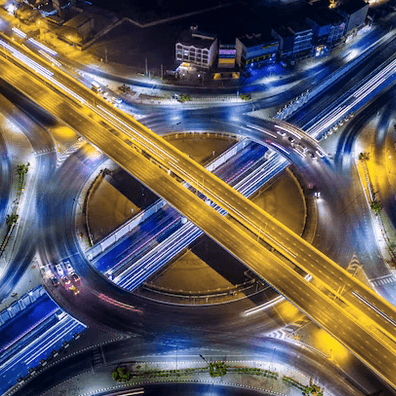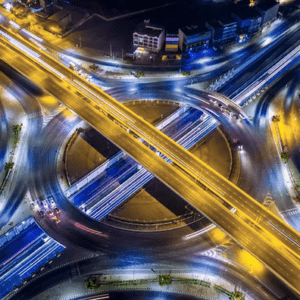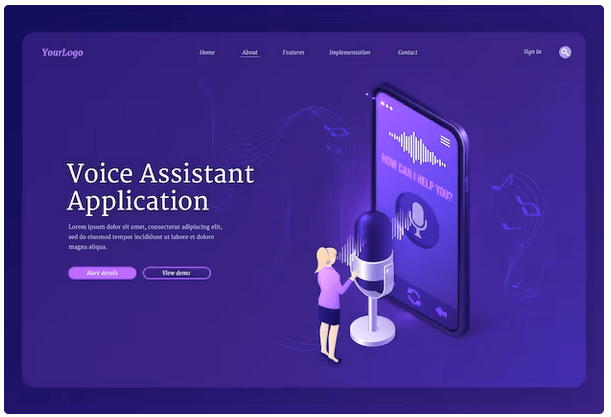
Smart Roads and Infrastructure with AI

In the not-so-distant future, our roads and infrastructure will be far more than mere pathways for transportation; they will be intelligent systems designed to enhance safety, efficiency, and sustainability. Thanks to the power of artificial intelligence (AI), we are witnessing the birth of smart roads and infrastructure, transforming the way we move, live, and interact with our urban environments. In this comprehensive blog post, we delve into the latest trends, key insights, and practical tips regarding smart roads and infrastructure with AI.
1. Introduction about Smart Roads and Infrastructure with AI
Smart roads and infrastructure powered by artificial intelligence (AI) are at the forefront of modern urban development and transportation systems. These innovative solutions are transforming the way we design, build, and manage our cities’ road networks and infrastructure, offering a plethora of benefits that enhance safety, efficiency, and sustainability.
AI, often referred to as the intelligence embedded in machines and software, is revolutionizing various industries, and transportation infrastructure is no exception. In the context of smart roads and infrastructure, AI technologies are being harnessed to create more intelligent, responsive, and adaptable systems. These advancements are driving the evolution of our urban landscapes and transportation networks.
Smart roads and infrastructure encompass a range of technologies and approaches, from intelligent traffic management systems and automated toll collection to responsive street lighting and the integration of renewable energy sources. These developments are driven by a shared vision of creating urban environments that are safer, more environmentally friendly, and capable of handling the challenges of a growing global population.
In this blog, we will delve deeper into the realm of smart roads and infrastructure with AI. We will explore the key trends, innovations, and practical applications that are reshaping our cities and revolutionizing the way we move, communicate, and live within them. From AI-driven traffic management to the integration of sensors and data analytics, we will journey through the exciting landscape of smart roads and infrastructure to understand the incredible potential they hold for urban development.
2. The Evolution of Urban Infrastructure
Urban infrastructure has come a long way from traditional roads and bridges. It now encompasses a network of interconnected systems, including transportation, communication, energy, and safety. These systems are increasingly reliant on AI for efficiency and effectiveness.
3. AI’s Role in Creating Smart Roads
AI’s Role in Creating Smart Roads
The concept of “smart roads” is revolutionizing our transportation infrastructure, making our roadways safer, more efficient, and environmentally sustainable. At the heart of this transformation is artificial intelligence (AI), a technology that is driving the development of intelligent transportation systems. AI is playing a pivotal role in creating smart roads that can adapt to changing conditions, improve traffic flow, and enhance the overall commuting experience.
Here are some key ways in which AI is contributing to the creation of smart roads:
- Traffic Management and Optimization: AI algorithms are used to analyze real-time traffic data from various sources, including sensors, cameras, and GPS systems. This data is processed to predict traffic congestion, accidents, and other disruptions. Traffic signals can be dynamically adjusted to alleviate congestion and optimize traffic flow, reducing travel times and emissions.
- Predictive Maintenance: AI-driven predictive maintenance can monitor the condition of road infrastructure, such as bridges and tunnels. By analyzing sensor data and historical maintenance records, AI can predict when maintenance is needed, preventing costly breakdowns and ensuring the safety of commuters.
- Autonomous Vehicles and Vehicle-to-Infrastructure (V2I) Communication: AI plays a critical role in the development of autonomous vehicles. Smart roads can communicate with these vehicles to enhance safety and efficiency. For example, roads equipped with AI sensors can provide information about road conditions and potential hazards to autonomous vehicles, allowing them to make informed decisions.
- Energy Efficiency: Smart roads can incorporate energy-efficient technologies, such as AI-powered street lighting that adjusts brightness based on real-time conditions. This not only saves energy but also improves safety by ensuring well-lit roads when needed.
- Enhanced Safety: AI is instrumental in enhancing road safety. Smart roads can detect speeding or erratic driving behavior and alert authorities. AI-powered surveillance systems can monitor pedestrian and cyclist safety, reducing the risk of accidents.
- Environmental Sustainability: Smart roads can contribute to environmental sustainability by using AI to manage traffic more efficiently. Reduced traffic congestion results in lower fuel consumption and emissions, making transportation more eco-friendly.
- Data-Driven Decision-Making: The data collected by smart road systems is invaluable for urban planners and policymakers. AI can process this data to make informed decisions about road maintenance, infrastructure development, and traffic management.
- Emergency Response: In case of accidents or emergencies, smart roads can facilitate quicker response times. AI systems can provide real-time data on incidents, helping emergency services reach the scene faster.
- Infrastructure Adaptability: Smart roads can adapt to changing weather conditions. For example, AI-controlled de-icing systems can be activated when sensors detect freezing temperatures, ensuring safer driving conditions during winter.
- Sustainability and Long-Term Planning: AI can assist in long-term infrastructure planning by assessing the environmental impact of road projects and recommending sustainable solutions.
4. Real-Time Traffic Management and Optimization
Smart roads with AI enable real-time traffic management and optimization. This includes:
- Dynamic Traffic Flow: AI adjusts traffic signals to accommodate changing traffic patterns, reducing congestion.
- Navigation Support: AI in vehicles provides real-time navigation that guides drivers to less congested routes.
- Predictive Maintenance: AI can predict when road infrastructure needs repair, reducing maintenance costs and road closures.
5. Smart Infrastructure for Safety
AI enhances safety in several ways:
- Accident Prevention: AI-equipped vehicles can detect and respond to potential accidents more quickly than human drivers.
- Pedestrian Safety: Smart roads incorporate AI-powered crosswalks and signals to protect pedestrians.
- Security: Surveillance cameras with AI can detect suspicious activities and alert authorities.
6. Sustainability and Environmental Benefits
Smart infrastructure promotes sustainability through:
- Reduced Emissions: AI-optimized traffic flow reduces vehicle idling, cutting emissions.
- Energy Efficiency: Smart streetlights dim when not needed, conserving energy.
- Waste Reduction: Predictive maintenance minimizes material waste.
7. Case Studies: Cities Embracing Smart Roads
Cities worldwide are implementing smart road and infrastructure solutions:
- Singapore: The city-state uses AI to optimize traffic lights, reducing commute times by 25%.
- Los Angeles: LA employs predictive analytics to reroute traffic in real time, reducing congestion by 12%.
- Barcelona: Smart streetlights save the city 30-40% in energy costs.
8. Overcoming Challenges and Concerns
While smart roads and infrastructure bring immense benefits, challenges remain. These include data privacy, cybersecurity, and the cost of implementation. It is crucial to address these concerns to ensure the success of smart city projects.
9. The Future of Smart Roads and Infrastructure
The future of smart roads holds exciting possibilities. AI will further improve traffic flow, enhance energy efficiency, and create safer, more sustainable urban environments. As technology evolves, the integration of AI, IoT, and 5G will pave the way for unprecedented innovation in our cities.
10. Conclusion
Smart roads and infrastructure with AI are not mere concepts; they are becoming a reality in our urban landscapes. As we embrace the power of AI to create efficient, safe, and sustainable cities, we can look forward to a future where our daily commutes are less stressful, our streets are safer, and our environment is healthier. The journey towards smart cities has begun, and the road ahead is paved with endless possibilities.
10. Frequently Asked Questions
Q1.What are smart roads start with smart infrastructure?
Q2.How smart cities and smart highways are developed with the help of AI?
AI Technologies for Smart Roads
Ans.AI-applied smart roads utilize traffic data collected by thousands of cameras, detectors, traffic lights, and parking meters. Here are some applications of AI and advanced technologies for improving smart road performance.
Q3.एआई की मदद से स्मार्ट सिटी और स्मार्ट हाईवे कैसे विकसित किए जाते हैं?
स्मार्ट सड़कों के लिए एआई टेक्नोलॉजीज
एआई-लागू स्मार्ट सड़कें हजारों कैमरों, डिटेक्टरों, ट्रैफिक लाइटों और पार्किंग मीटरों द्वारा एकत्र किए गए ट्रैफ़िक डेटा का उपयोग करती हैं। स्मार्ट सड़क प्रदर्शन में सुधार के लिए एआई और उन्नत प्रौद्योगिकियों के कुछ अनुप्रयोग यहां दिए गए हैं।
Q4.
Q6.



